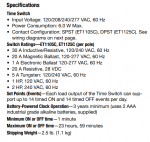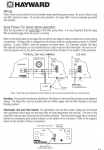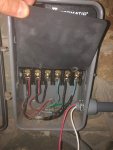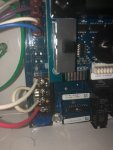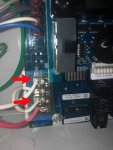All,
So about to get this baby hooked up. I have read two pool school articles about what it is in general and how to water balance so I think I will be able to roll once I get it hooked up from a PH, CYA perspective, but I have some general questions of ignorance.
1. What salt do I buy, just pool salt from home depot, Lowes or Atwoods?
2. How do I put the salt in the pool (Vinyl)? Dump it in, dissolve it first?
3. I assume I should watch it like a hawk for the first bit making % adjustments / time adjustments, to make sure the chlorine levels are holding and supplement with bleach, correct? I do not want my pool to go green with a high CYA.
4. The cell I have for it is used, maybe has 1-2 years left on it. I assume I should clean it first like I am opening the pool, yes?
5. SIDE Comment, I just saw on Amazon the cell W3T-Cell-15, is $489 vs $600 back in April when I was originally pricing these. Is this typical at the end of the year or does this like never happen. I am inclined to buy it today and install it 2 years from now to save the money (I do this with a lot of things. Buy things you know you will need when you see it on sale way before you need it because when you need it, you will pay full price)
Thanks guys! Best forum community on the net
So about to get this baby hooked up. I have read two pool school articles about what it is in general and how to water balance so I think I will be able to roll once I get it hooked up from a PH, CYA perspective, but I have some general questions of ignorance.
1. What salt do I buy, just pool salt from home depot, Lowes or Atwoods?
2. How do I put the salt in the pool (Vinyl)? Dump it in, dissolve it first?
3. I assume I should watch it like a hawk for the first bit making % adjustments / time adjustments, to make sure the chlorine levels are holding and supplement with bleach, correct? I do not want my pool to go green with a high CYA.
4. The cell I have for it is used, maybe has 1-2 years left on it. I assume I should clean it first like I am opening the pool, yes?
5. SIDE Comment, I just saw on Amazon the cell W3T-Cell-15, is $489 vs $600 back in April when I was originally pricing these. Is this typical at the end of the year or does this like never happen. I am inclined to buy it today and install it 2 years from now to save the money (I do this with a lot of things. Buy things you know you will need when you see it on sale way before you need it because when you need it, you will pay full price)
Thanks guys! Best forum community on the net


